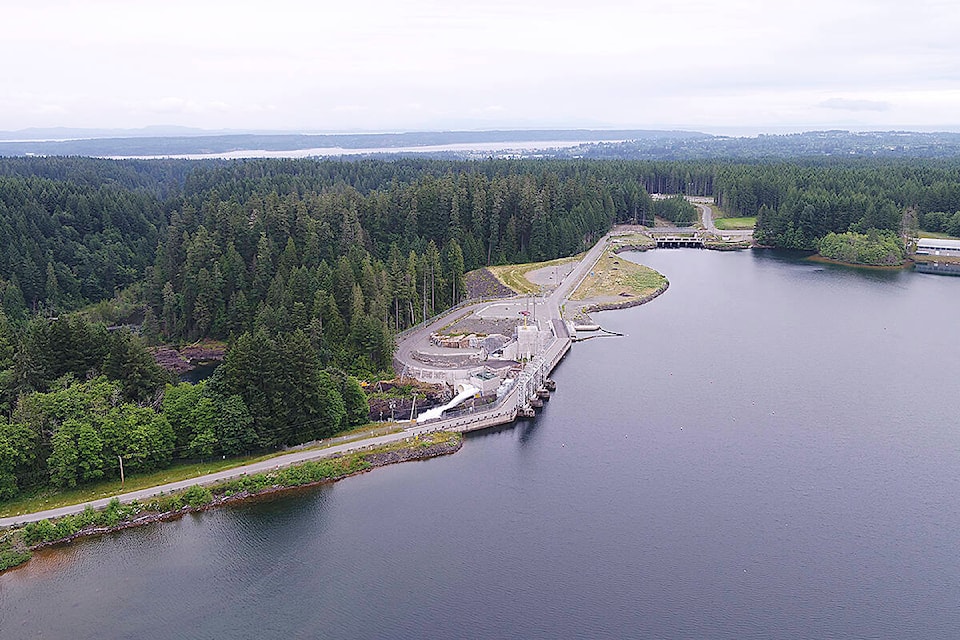Initial water supply forecasts for the Campbell River system might have been overestimated.
BC Hydro’s initial forecast in February showed water inflows into the watershed to be about 97 per cent of normal, but given a dry February and first couple weeks of Marc, the forecast has dropped to 85 per cent of normally.
“Over the next few months the weather may shift to a wetter trend and have better snowpack conditions,” said spokesperson, Stephen Watson. “Though BC Hydro is proactively conserving water storage now in case conditions remain drier than normal through the spring.”
The February precipitation rate was 58 per cent of average, while March to date is at 61%. Watson said the snowpack is below normal for this time of year, but noted it generally peaks in April.
The Vancouver Island region currently has the lowest water supply forecast in BC Hydro’s system, with other areas normal or even slightly above normal.
“This region has also had four years in a row of drier than normal late winter and spring period years, with this possibly trending towards a fifth year,” Watson said.
READ MORE: Water supply forecast fairly normal for Campbell River system
READ MORE: BC Hydro launches major seismic upgrade for John Hart Dam
Our 2022 Feb-Sept water supply forecast - now updated in Mar - for our four Vancouver Island hydroelectric watersheds:
— Stephen Watson, BC Hydro (@SWatson_BCH) March 9, 2022
💧Puntledge River: 87%
💧Ash River #Alberni: 86%
💧#CampbellRiver: 85% (📷)
💧Jordan River: 84%
They were all at 97% in Feb. Dry Feb and early Mar. pic.twitter.com/OsoL4CWK1p
BC Hydro was passing about 100 cubic metres per second (m3/s), or about 73 per cent of electricity generation at the John Hart powerhouse for some time until it was reduced down to 80 m3/s on Feb. 28.
On Tuesday (March 8) this week, flows were reduced to 70 m3/s or about 50 per cent of power generation capacity. Water inflows into the watershed this week have been around 40 m3/s, though may increase to up to 100 m3/s with some incoming wetter weather.
The largest of the three reservoirs, Upper Campbell Reservoir/Buttle Lake, is currently at 215.75 metres, which is still within the preferred zone but about 1.15 metres lower than last month. The preferred reservoir level range adjusts lower into the spring and at the lower end is 213.5 metres. The reservoir is considered full at 220.5 metres.
“With the current dry weather forecast the reservoir level may continue to slowly drop in the short term”’ Watson said.
This is the same situation for the Lower Campbell Reservoir/McIvor Lake, which is currently at 177.3 metres, and has a smaller preferred seasonal range from 176 metres to 177.8 metres through to June 21.
“We are conserving water now, given the updated water supply forecast, to limit the rate of drop within the reservoirs and consider the fish out-migration period later this spring and being able to increase river flows,” Watson said. “As well as still achieving summer reservoir recreation levels. Should conditions turn wetter than normal we’ll be even better positioned. “
The 70 m3/s flow rate within the Campbell River is a level that keeps key fish habitat covered with water. BC Hydro plans to hold the flow rate through March and depending on the water supply, heading into April, it will look to be able to increase flows for the salmon out-migration. This will be dependent on the weather conditions and available water storage. River flows will then normally be lowered in steps down to about 30 to 40 m3/s by July.
BC Hydro may provide a water supply and operations update in April.
editor@campbellrivermirror.com
Like us on Facebook and follow us on Twitter
